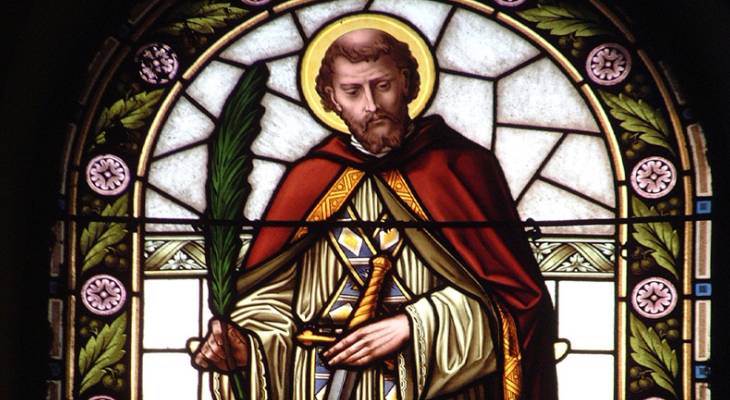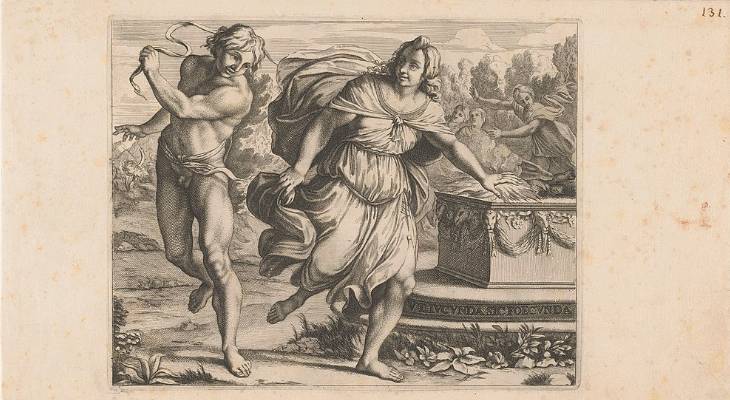On 14th February, all over the world, lovers celebrate St Valentine’s Day. But how did St Valentine’s become associated with romantic love? Discover some amusing facts about the history of Valentine’s Day.
Was it for St Valentine of Rome?

Basilica of St Valentine
In 496 AD, Pope Gelasius marked February 14 as the feast commemorating St Valentine of Rome. St Valentine of Rome is just one of a dozen St Valentines appearing on the Roman Catholic roster of saints, and, while there are several confusions about his identity and variations in the legends, it is widely accepted that the priest (or bishop) was arrested for marrying Christian couples and assisting Christians.
Valentinus was finally martyred for trying to convert the Emperor Claudius himself while a prisoner, but only after miraculously restoring sight to his jailer’s blind daughter, who he eventually fell in love with. He signed ‘from your Valentine’ on his farewell note to her. More or less, the story goes, if you piece it all together.
Was it to abolish the pagan festival of Lupercalia?

Rijksmuseum
While 14th February may indeed be the anniversary of St Valentine of Rome’s death in 270 AD, 8th-century antiquarians Alban Butler and Francis Douce proposed that Valentine's Day was placed on that date in an effort to christianise the pagan festival of Lupercalia, which was abolished in the same period.
Lupercalia was a pagan festival dedicated to Faunus, the Roman god of agriculture, that was celebrated in Rome on 13th -15th February to purify the city from evil spirits, and invite health and fertility. Lupercalia’s customs included priests dipping goat hide into its sacrificial blood and gently slapping women and crop fields to bless them with fertility. Legend recounts how the city’s bachelors would pair with women, with the scope of marriage, by picking their names from an urn on this day, however, there is no historical evidence of this.
Was it due to the popularity of a medieval English poet?
Despite the stories relating to St Valentine of Rome and Lupercalia, there is no record of romantic celebrations on Valentine’s Day until a poem by medieval English poet Geoffrey Chaucer received widespread attention and the association stuck! The holiday's romantic tradition was inadvertently set in motion by Chaucer in 1375.
In his poem Parliament of Foules, Chaucer associates courtly love with St Valentine’s feast day for the first time. Ironically, when Chaucer wrote "For this was sent on Saint Valentine’s Day, when every bird comes there to choose his mate," he was probably referring to St Valentine of Genoa, whose feast on 2 May is a more likely beginning of birds’ mating season than mid-February.
The origin of Valentine notes and celebrations
Valentine greetings and tokens became popular in the Middle Ages, probably thanks to Chaucer’s poem. The oldest surviving written valentine is a poem by Charles, Duke of Orleans, to his wife in 1415, while he was imprisoned in the Tower of London.
Valentine’s Day became increasingly popular worldwide around the 17th century, as was the custom of exchanging small handwritten notes, which were eventually replaced by printed greetings cards. Modern marketing has inflated the celebration to include expensive gifts, lavish meals and romantic getaways!
Fun Fact: You can celebrate Valentine’s Day a dozen times a year

- 1st January - celebrates Bl. Valentin Paquay, a Franciscan monk of of Tongres, Belgium, who died in 1905.
- 7th January - celebrates an abbot and missionary bishop in Rhaetia, who died in 470.
- 14th February - celebrates Saint Valentine of Rome, martyred in 269.
- 29th April - celebrates St Valentine with Germanus, martyred in Alexandria.
- 2nd May - celebrates a bishop of Genoa, Italy, who died in 307. Relics discovered.
- 16th July - celebrates a Bishop of Trier, Germany, a martyr executed in 305 during the persecutions under Emperor Diocletian.
- 25th July - celebrates the only female Valentine, St. Valentina & Thea, virgin martyrs executed in Palestine in 308, during the reign of Emperor Galerius.
- 2nd September - celebrates a bishop of Strasbourg, France, who died in the 4th century.
- 3rd November - celebrates St Valentine and Hilary, a priest and a deacon who were beheaded at Viterbo, Italy, in 304 during the persecutions under Emperor Diocletian.
- 17th November - celebrates St Valentine and Dubatatius, who were executed in Carthage.
- 1st November - celebrates the most recent: St Valentine Berrio-Ochoa, a Spanish Bishop and martyr of Vietnam, who was executed in 1861.
- 16th December - celebrates St Valentine who was part of a group martyrdom in Ravenna, Italy, in 305.